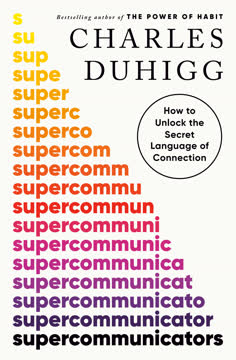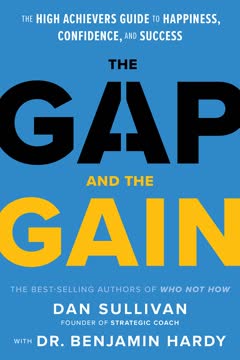نکات کلیدی
1. تجربه مشتری میدان نبرد رقابتی جدید است
با وجود عدم نقص در محصولات، ارائههای سفارشی، قیمتهای پایین و دسترسی فراگیر که به هنجار در تمام صنایع تبدیل شدهاند، تنها چیزی که برای یک کسبوکار باقی میماند تا خود را از رقبا متمایز کند، تجربه مشتری است.
تجربه به عنوان تمایزدهنده. در بازار امروز، کیفیت محصول، سفارشیسازی و قیمتگذاری دیگر برای متمایز کردن یک کسبوکار کافی نیستند. تجربه مشتری به میدان نبرد اصلی برای مزیت رقابتی تبدیل شده است. این تغییر نیازمند تمرکز شرکتها بر ایجاد تعاملات مثبت و بهیادماندنی در هر نقطه تماس است.
تکامل انتظارات مشتری:
- دهه 1960-70: مشتریان با محصولات کاربردی راضی بودند
- دهه 1980: تمرکز بر عدم نقص و مدیریت کیفیت
- دهه 1990: سفارشیسازی به کلید تبدیل شد
- دهه 2000-10: قیمتهای پایین و دسترسی 24/7 مورد انتظار بود
- حال حاضر: تجربه برتر مشتری تمایزدهنده است
شرکتها باید فراتر از خدمات مشتری ساده بروند و تجربیات جامع و احساسی ایجاد کنند که تأثیرات مثبت و ماندگاری بر جای بگذارد.
2. هشت مرحله تجربه مشتری: از ارزیابی تا حمایت
همه مشتریان پتانسیل گذر از یک سری هشت مرحلهای را در حدود صد روز دارند.
سفر مشتری. کولمن هشت مرحله متمایز را که مشتریان معمولاً در رابطه با یک شرکت طی میکنند، تشریح میکند. درک و بهینهسازی هر مرحله برای ایجاد مشتریان وفادار و بلندمدت حیاتی است.
هشت مرحله تجربه مشتری:
- ارزیابی: مشتری ارزیابی میکند که آیا با شما تجارت کند
- پذیرش: مشتری تصمیم به خرید میگیرد و به مشتری جدید تبدیل میشود
- تأیید: پشیمانی خریدار را برطرف کرده و تصمیم را تقویت کنید
- فعالسازی: اولین تعامل مهم پس از خرید
- آشنایی: مشتری با روش کسبوکار شما آشنا میشود
- دستیابی: مشتری به نتیجه مطلوب خود میرسد
- پذیرش: مشتری مالکیت رابطه را به عهده میگیرد
- حمایت: مشتری به موتور ارجاع برای کسبوکار شما تبدیل میشود
با تمرکز بر هر مرحله، شرکتها میتوانند سفری یکپارچه و مثبت ایجاد کنند که مشتریان را به حامیان وفادار تبدیل کند.
3. تحقیق، مشاهده، شخصیسازی و شگفتزده کردن مشتریان
هرچه بیشتر درباره مشتریان خود بدانیم، راحتتر میتوانیم آنها را در تعاملات خود شگفتزده کنیم.
شناخت مشتریان. برای ایجاد تجربیات استثنایی، کسبوکارها باید مشتریان خود را بهخوبی بشناسند. این شامل یک فرآیند چهار مرحلهای است: تحقیق، مشاهده، شخصیسازی و شگفتزده کردن.
فرآیند چهار مرحلهای برای شناخت مشتری:
- تحقیق: جمعآوری دادهها درباره ترجیحات، تاریخچه و نیازهای مشتریان
- مشاهده: مشاهده نحوه تعامل مشتریان با محصول یا خدمات شما
- شخصیسازی: تنظیم تعاملات بر اساس بینشهای فردی مشتری
- شگفتزده کردن: فراتر از انتظارات با حرکات متفکرانه
با اجرای این فرآیند، شرکتها میتوانند تجربیات بسیار شخصیسازی شدهای ایجاد کنند که بهطور احساسی با مشتریان همخوانی داشته و روابط و وفاداری قویتری ایجاد کنند.
4. صد روز اول برای حفظ مشتری حیاتی است
من دوست دارم بر صد روز اول پس از فروش به عنوان یک پنجره حیاتی برای تأمین وفاداری مشتری تأکید کنم—نه به این دلیل که یک محدودیت زمانی دقیق است، بلکه به این دلیل که بهراحتی به خاطر سپرده میشود، به اندازه کافی کوتاه است تا تمرکز حفظ شود و به اندازه کافی طولانی است تا ارزش ارائه شود.
پنجره حیاتی برای وفاداری. دوره اولیه پس از خرید برای ایجاد یک رابطه قوی با مشتری حیاتی است. در این زمان، کسبوکارها فرصت دارند تا تصمیم مشتری را تقویت کنند، ارزش ارائه دهند و زمینه را برای تعامل بلندمدت فراهم کنند.
استراتژیهای کلیدی برای صد روز اول:
- تقویت تصمیم خرید مشتری
- ارائه راهنمایی و آموزش واضح
- ارائه موفقیتهای اولیه و ارزش
- ایجاد نقاط تماس ارتباطی منظم
- بهسرعت به هرگونه نگرانی یا مسئلهای رسیدگی کنید
با تمرکز بر ایجاد تجربیات مثبت در این دوره حیاتی، شرکتها میتوانند بهطور قابلتوجهی حفظ مشتری را افزایش داده و زمینه را برای وفاداری بلندمدت فراهم کنند.
5. تعاملات ضروری را به یادماندنی کنید: تعاملات روزمره را متحول کنید
تعاملات ضروری را به یادماندنی کنید.
ارتقاء تعاملات روزمره. کسبوکارها اغلب فرصتهای ایجاد تجربیات بهیادماندنی در تعاملات روزمره با مشتریان را نادیده میگیرند. با بازاندیشی این نقاط تماس، شرکتها میتوانند لحظات عادی را به لحظات فوقالعاده تبدیل کنند.
نمونههایی از بهیادماندنی کردن تعاملات ضروری:
- ایمیل تأیید سفارش خلاقانه CD Baby
- برنامه ارجاع Dropbox برای فضای ذخیرهسازی اضافی
- پیامهای ویدیویی شخصیسازی شده Zogics برای مشتریان جدید
- پازل پیادهسازی PolicyMedical برای راهاندازی نرمافزار
این نمونهها نشان میدهند که چگونه خلاقیت و تفکر میتواند ارتباطات ضروری را به تجربیات دلپذیر تبدیل کند که روابط مشتری را تقویت کرده و شرکت را از رقبا متمایز میکند.
6. توانمندسازی کارکنان برای ایجاد تجربیات استثنایی
تقریباً غیرممکن است که از یک کارمند انتظار داشته باشیم مشتری را شگفتزده کند اگر خودشان هرگز تجربه شگفتزده شدن را نداشته باشند.
تجربه کارکنان مهم است. برای ارائه تجربیات استثنایی به مشتریان، شرکتها باید ابتدا فرهنگی ایجاد کنند که کارکنان را توانمند و الهامبخش کند. وقتی کارکنان احساس ارزشمندی کنند و اختیار داشته باشند که فراتر از انتظارات بروند، احتمال بیشتری دارد که لحظات بهیادماندنی برای مشتریان ایجاد کنند.
استراتژیهایی برای توانمندسازی کارکنان:
- ارائه آموزش جامع درباره اصول تجربه مشتری
- به کارکنان اختیار تصمیمگیریهایی که به نفع مشتریان است را بدهید
- شناسایی و پاداش دادن به خدمات استثنایی مشتری
- ایجاد محیط کاری حمایتی که خلاقیت را تشویق کند
- به اشتراکگذاری داستانهای موفقیت مشتری برای الهامبخشی و انگیزهدهی به کارکنان
با سرمایهگذاری در تجربه کارکنان، شرکتها اثر موجی ایجاد میکنند که بهطور مثبت بر تعاملات مشتری و موفقیت کلی کسبوکار تأثیر میگذارد.
7. مشتریان حامی بهترین دارایی بازاریابی شما میشوند
مشتریانی که به این اوج میرسند، به وزن خود طلا میارزند.
قدرت حمایت. وقتی مشتریان به مرحله حمایت میرسند، به داراییهای قدرتمندی برای یک کسبوکار تبدیل میشوند. این مشتریان وفادار نه تنها به خرید ادامه میدهند بلکه بهطور فعال شرکت را به دیگران معرفی میکنند و به عنوان نمایندگان بازاریابی بدون حقوق عمل میکنند.
مزایای مشتریان حامی:
- ارائه بازاریابی دهان به دهان اصیل
- کاهش هزینههای جذب مشتری
- افزایش ارزش طول عمر مشتری
- ارائه بازخورد و بینشهای ارزشمند
- تقویت اعتبار و شهرت برند
برای پرورش حامیان، کسبوکارها باید بر ارائه مداوم تجربیات استثنایی در طول سفر مشتری تمرکز کنند و فرصتهایی برای مشتریان ایجاد کنند تا تجربیات مثبت خود را با دیگران به اشتراک بگذارند.
8. تجربیات بهیادماندنی منجر به افزایش سود و وفاداری میشود
در طیف گستردهای از صنایع، بهبود 5 درصدی در نرخهای حفظ مشتری منجر به افزایش 25 تا 100 درصدی در سود میشود.
تأثیر مالی حفظ مشتری. سرمایهگذاری در تجربه و حفظ مشتری میتواند تأثیر مثبت قابلتوجهی بر سودآوری یک شرکت داشته باشد. با تمرکز بر حفظ مشتریان موجود، کسبوکارها میتوانند بهطور چشمگیری سودآوری را افزایش دهند.
دلایل افزایش سود از طریق حفظ مشتری:
- کاهش هزینههای جذب مشتری
- افزایش ارزش طول عمر مشتری
- افزایش فرصتهای فروش و فروش متقابل
- ارجاعات بیشتر از مشتریان راضی
- بهبود شهرت برند که منجر به فروش آسانتر میشود
شرکتهایی که تجربه و حفظ مشتری را در اولویت قرار میدهند، چرخهای فضیلتآمیز از رضایت مشتری، وفاداری و افزایش سودآوری ایجاد میکنند. این رویکرد نه تنها بهطور مالی به کسبوکار سود میرساند بلکه رابطهای مثبت و پایدار با مشتریان ایجاد میکند.
آخرین بهروزرسانی::
FAQ
What's Never Lose a Customer Again about?
- Customer Loyalty Focus: The book emphasizes the importance of building lifelong customer relationships rather than just acquiring new customers. Joey Coleman argues that retaining customers is crucial for long-term profitability.
- First 100 Days Philosophy: Coleman introduces the "First 100 Days" concept, a critical period after a purchase where businesses can create remarkable experiences to ensure customer satisfaction and loyalty.
- Eight Phases of Customer Experience: The book details eight phases that customers go through, from assessing options to becoming brand advocates, each requiring specific strategies to enhance the experience.
Why should I read Never Lose a Customer Again?
- Actionable Strategies: The book provides practical, step-by-step techniques that businesses can implement immediately to improve customer retention, applicable to companies of all sizes and industries.
- Real-World Examples: Coleman shares numerous case studies from various businesses, illustrating successful implementation of his methods, making the advice relatable and easier to understand.
- Emotional Connection Focus: The book emphasizes understanding the emotional journey of customers, helping businesses connect with clients on a deeper level, which is key to fostering loyalty.
What are the key takeaways of Never Lose a Customer Again?
- Customer Experience is Key: The book stresses that customer experience is the last true brand differentiator in today's market, urging companies to prioritize creating exceptional experiences.
- Retention Over Acquisition: Coleman argues that businesses often spend too much on acquiring new customers while neglecting to retain existing ones, suggesting that focusing on retention can lead to higher profits.
- Importance of the First 100 Days: The initial period after a sale is crucial for establishing a strong relationship, and businesses should aim to impress customers during this time to prevent buyer's remorse.
What is the First 100 Days® method in Never Lose a Customer Again?
- Critical Timeframe: The First 100 Days refers to the period immediately following a customer's purchase, crucial for establishing a strong relationship and ensuring satisfaction.
- Focus on Experience: During this period, businesses should create remarkable experiences that exceed customer expectations, helping to prevent buyer's remorse and foster loyalty.
- Structured Approach: Coleman outlines specific strategies and actions businesses can take during the First 100 Days to enhance the customer experience, ensuring customers feel valued and appreciated.
What are the eight phases of the customer experience in Never Lose a Customer Again?
- Assess: Customers evaluate whether your business can meet their needs, involving marketing and sales efforts to attract potential customers.
- Admit: The customer acknowledges their need and makes a purchase, marked by excitement and anticipation.
- Affirm: Customers may experience buyer's remorse, feeling doubt about their decision, requiring businesses to reassure them and affirm their choice.
- Activate: This phase begins with the first major interaction, where the business delivers on its promises, creating a memorable first impression.
- Acclimate: Customers learn how to navigate the business's processes and systems, with guidance and support being crucial.
- Accomplish: The customer achieves their desired result from the product or service, and celebrating this milestone reinforces loyalty.
- Adopt: Customers take ownership of the relationship and become more engaged, deepening the bond with the business.
- Advocate: Customers become loyal fans and promote the business to others, the ultimate goal of the customer experience journey.
How can I implement the strategies from Never Lose a Customer Again in my business?
- Assess Current Practices: Start by evaluating your current customer experience processes and identify areas for improvement during the First 100 Days.
- Train Your Team: Ensure your team understands the importance of customer experience and is trained in the strategies outlined in the book, including effective customer interactions.
- Create a Customer Journey Map: Develop a visual representation of the customer journey, highlighting each of the eight phases to help your team understand where improvements can be made.
What is the four-step process mentioned in Never Lose a Customer Again?
- Investigate: Gather as much information as possible about customers, including personal and emotional data, to tailor interactions effectively.
- Observe: Watch customers in their natural environment to gain insights into their behaviors and needs, identifying pain points and opportunities for improvement.
- Personalize: Use the information gathered to create personalized communications and experiences that resonate with customers, fostering a deeper connection.
- Surprise: Go above and beyond by surprising customers with thoughtful gifts or gestures, significantly enhancing loyalty and encouraging referrals.
What are some examples of remarkable customer experiences from Never Lose a Customer Again?
- Build-A-Bear: The company celebrates the moment a child adopts a stuffed animal, creating a memorable experience by announcing the adoption to the store.
- Zogics: This company sends a personalized video message to new customers, introducing them to their account manager, building a connection and reassuring customers.
- Total Debt Freedom: They create a smooth handoff between the salesperson and the account manager through a personalized video, reassuring customers and boosting confidence in their choice.
What is the significance of emotional connection in Never Lose a Customer Again?
- Building Trust: Emotional connections help build trust between the business and the customer, increasing the likelihood of loyalty.
- Reducing Buyer’s Remorse: Addressing customers' emotional states can counter feelings of doubt and uncertainty, particularly important during the Affirm phase.
- Creating Advocates: Positive emotional experiences lead customers to become advocates for the brand, resulting in word-of-mouth referrals and increased loyalty.
What are some common mistakes businesses make regarding customer retention according to Never Lose a Customer Again?
- Neglecting Post-Sale Experience: Many businesses focus heavily on acquiring new customers but fail to nurture existing ones, leading to high turnover rates and lost revenue.
- Poor Communication: Failing to communicate effectively during the First 100 Days can leave customers feeling neglected, making regular check-ins and updates essential.
- Ignoring Emotional Needs: Businesses often overlook the emotional journey of their customers, which is crucial for fostering loyalty and satisfaction.
What are the best quotes from Never Lose a Customer Again and what do they mean?
- “You lose customers because they feel neglected after the sale is made.”: Highlights the importance of ongoing customer engagement and nurturing relationships post-sale.
- “All business is ultimately the same, because all business boils down to humans dealing with humans.”: Underscores the significance of human connection in business, emphasizing understanding and meeting the needs of people.
- “If you can meet your customers where they are, you can avoid missing the opportunity to take them out of the sterile B2B environment.”: Emphasizes the need for businesses to connect with customers on an emotional level, suggesting that understanding customers' feelings and experiences is key to building lasting relationships.
نقد و بررسی
کتاب هرگز مشتری را از دست ندهید با نقدهای بسیار مثبتی روبهرو میشود و خوانندگان از توصیههای عملی آن در زمینهی حفظ و تجربهی مشتری تمجید میکنند. بسیاری از خوانندگان روش هشتمرحلهای و استراتژیهای ارتباطی کتاب را برای کسبوکارهایی با اندازههای مختلف بسیار ارزشمند میدانند. خوانندگان از مثالهای واقعی متعدد، نکات قابل اجرا و تمرینهای پایان فصل قدردانی میکنند. برخی اشاره میکنند که اگرچه برخی از پیشنهادات ممکن است برای کسبوکارهای کوچکتر قابل اجرا نباشد، اما مفاهیم کلی به طور گستردهای قابل استفاده هستند. این کتاب اغلب به عنوان کتابی بصیرتبخش، تحولآفرین و ضروری برای صاحبان کسبوکار و کارکنان مواجه با مشتری توصیف میشود.
Similar Books














